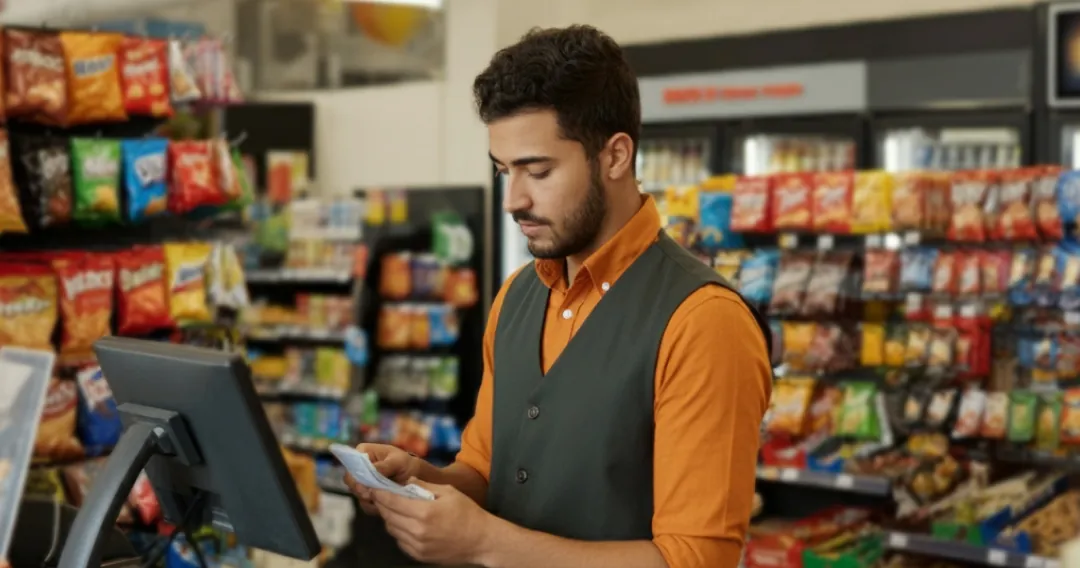Understanding Loss Prevention in Convenience Stores
Convenience stores face distinct challenges when it comes to loss prevention. Their (sometimes) 24/7 operations and high-traffic environments create numerous opportunities for theft and fraud. The prevalence of cash transactions increases vulnerability to both internal and external theft. Limited staffing, often with a single employee managing the entire store, further complicates security efforts.
Types of Losses in Convenience Stores
Losses in convenience stores come in various forms. External theft, or shoplifting, remains a significant concern. Internal theft by employees, while less common, can be more damaging due to its ongoing nature. Monitoring and conducting inventory regularly can help prevent losses due to theft or errors. Operational errors and administrative mistakes, such as incorrect pricing or miscounts during inventory, contribute to shrinkage. Perishable food waste and fraud, including counterfeit currency and credit card scams, round out the primary sources of loss.

5 Comprehensive Loss Prevention Strategies
Effective loss prevention in convenience stores requires a multi-faceted approach that addresses various potential sources of loss, emphasizing the importance of various loss prevention tactics. If you can implement the following strategies, you can significantly reduce losses while maintaining a welcoming environment for customers. The key is to create a comprehensive system where these strategies work together to protect your assets and improve your bottom line.
Store Layout and Design
Optimize your store’s layout to deter theft and improve visibility:
- Reduce blind spots by using strategic mirror placement
- Ensure proper lighting throughout the store
- Position high-value items in easily monitored areas
- Use clear sight lines to allow staff to observe the entire store
Technology Solutions and Video Surveillance
Leverage modern technology to enhance security and tracking:
- Implement and update security systems to enhance loss prevention
- Install comprehensive video surveillance systems
- Implement point-of-sale (POS) analytics to detect unusual patterns
- Use RFID tagging for high-value or frequently stolen items
- Consider smart shelves for real-time inventory tracking
- Deploy advanced cash management systems to reduce cash handling risks
Employee Training and Culture
Create a culture of loss prevention awareness:
- Train staff to identify suspicious behavior, including employee theft
- Teach proper cash handling procedures
- Emphasize customer service as a theft deterrent
- Regularly update employees on new loss prevention techniques and policies
Cash Handling and Transaction Procedures
Implement strict cash management protocols:
- Use dual control for cash register operations
- Perform regular cash audits
- Limit the amount of cash kept on hand
- Train employees on proper cash handling and transaction procedures
Customer-Centric Approach
Balance security measures with a positive customer experience:
- Train staff to provide attentive customer service
- Implement security measures that don’t impede the shopping experience
- If using self-checkout, ensure proper oversight and controls
Consider retail loss prevention tips that enhance security while improving customer experience, such as using a greeter to monitor customer activity while creating a welcoming atmosphere.
How to Measure the Success of your LP Program and how to Define Your Strategies
Now that you know how to develop and implement a loss prevention program, how can you be sure it’s successful? The key lies in establishing clear metrics and consistently analyzing your data.
Establish Key Performance Indicators (KPIs)
Start by setting specific, measurable Key Performance Indicators (KPIs) that align with your loss prevention goals. These might include your shrinkage rate as a percentage of sales, the number of reported incidents per month, or the average dollar value of losses per incident. By tracking these metrics over time, you’ll gain a clear picture of your program’s effectiveness.
Leverage Data Analytics
Data analytics plays a crucial role in measuring success. ThinkLP’s Exception-Based Reporting & Analytics tools can help you dive deep into your data, identifying suspicious patterns in transactions and spotting trends in inventory discrepancies. This real-time analysis allows you to stay ahead of potential issues and adjust your strategies proactively.
Conduct Regular Audits
Regular audits are another essential component of measuring success. ThinkLP’s Smart Audit feature enables comprehensive compliance checks across your stores, ensuring all locations are consistently assessed. By implementing a scoring system, you can track improvements over time and identify areas that need additional attention.
Analyze Case Management Metrics
Case management metrics provide valuable insights into the efficiency of your loss prevention efforts. Track case closure rates, average resolution times, and successful prosecutions or recoveries. This information can help you refine your processes and allocate resources more effectively.
Gather Employee Feedback
Don’t underestimate the power of feedback from your employees and store managers. Their on-the-ground insights can highlight potential gaps in your strategy and provide valuable suggestions for improvement. This feedback loop ensures your loss prevention program remains relevant and effective.
Benchmark Against Industry Standards
Finally, benchmark your performance against industry standards. This comparison helps you identify areas where you’re excelling or lagging behind, set realistic goals for improvement, and justify investments in new loss prevention measures.
Commitment to Continuous Improvement
The most successful loss prevention programs are those that continuously evolve. Regularly review and adjust your strategies based on the data and insights you gather. With ThinkLP’s comprehensive platform, you have the tools necessary to track, analyze, and improve your loss prevention efforts, ensuring your program remains effective in the face of changing threats and challenges.
Emerging Trends and Future of Convenience Store Loss Prevention
The field of loss prevention continues to evolve with technological advancements. New technologies and strategies are being developed to prevent theft in convenience stores. AI and machine learning applications are enhancing the capabilities of surveillance and analytics systems. Integration with mobile payment systems is creating new challenges and opportunities for loss prevention. Biometric security measures are also emerging as a potential tool for enhancing store security.
Final Thoughts on Convenience Store Loss Prevention
Effective loss prevention in convenience stores requires a holistic approach that addresses all potential sources of loss while maintaining operational efficiency and customer satisfaction. By implementing comprehensive strategies and staying informed about emerging trends, convenience store owners can protect their assets and foster a secure environment for both customers and employees.
Explore ThinkLP’s Blog
Now that you know more about how to prevent loss, you can find additional insights on loss prevention and safety intelligence on ThinkLP’s blog. The blog features articles, case studies, and industry insights that provide practical tips and strategies for improving your loss prevention efforts.
Request a Demo
If you are interested in how ThinkLP’s software can support your loss prevention initiatives, we invite you to request a demo. Their Loss & Safety Intelligence Platform is designed to integrate with your existing operations, helping you reduce risks and improve efficiency. Reach out today to learn how ThinkLP can assist your organization in optimizing its loss prevention strategy.


